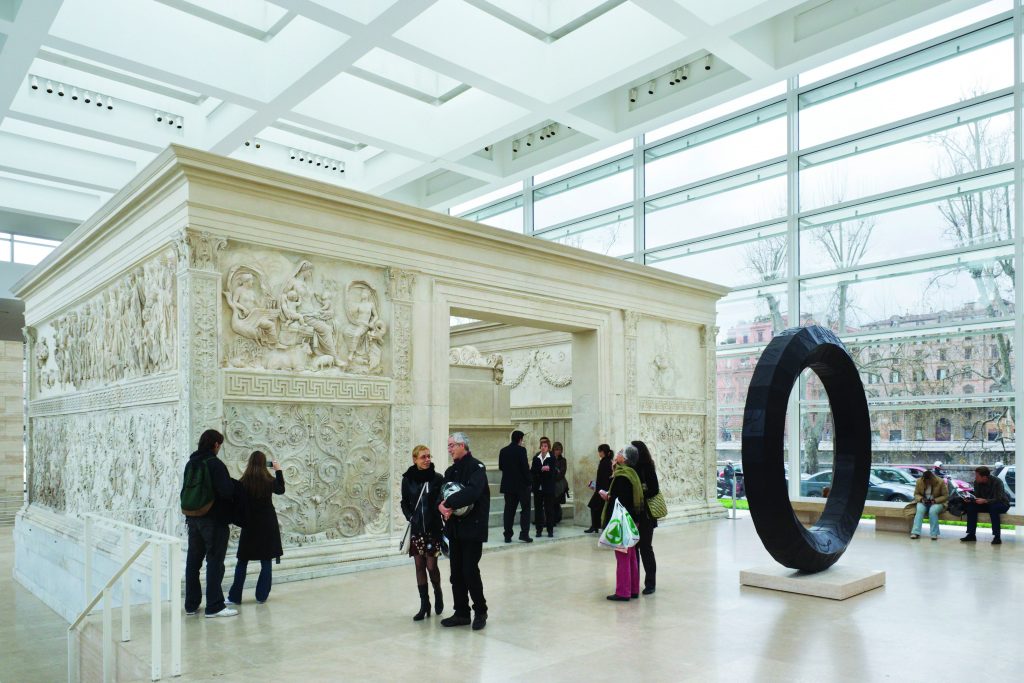The marble sculptures on Rome’s altar of absolute peace attract visitors because of their beauty, but their origins lie in celebrating the victories of Emperor Augustus…

The Ara Pacis Augustae, or altar to the absolute peace, was commissioned by the Roman Senate in 13BC, and in 9BC was dedicated to the peace established by Emperor Augustus’ victories in Gaul and Hispania. The altar stood within a white marble enclosure, and the front side of the carved monument featured scenes of the Emperor and his family making sacrifices to the gods. The sculptures were highly praised for their level of detail and realistic nature. The other three walls depicted important events in Roman history and mythology, such as the panel on the west wall, which showed the moment when Romulus and Remus were discovered by Faustulus. Rather than being purely decorative, it was used as a working altar for the slaughter of animals.
Considered the most famous surviving piece of Augustan art, the altar was originally located on the west side of Via Flamina in Rome. As this area lay on the flood plain of the river Tiber, the altar was eventually buried under layers of silt. In 1938 Benito Mussolini arranged for Giuseppe Moretti to move and reconstruct the altar close to the Mausoleum of Augustus. The altar stands in the same place today, protected by a glass building. n!
